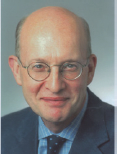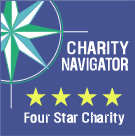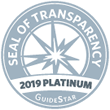 Presented by Terry F. Davies, MD
Presented by Terry F. Davies, MD
American Thyroid Association
Annual Business Meeting
Hyatt Regency
Minneapolis
Friday, May 14, 2010
Dr. Davies thanks Dr. Kloos and states what excellent hands the ATA is in, commending Dr. Kloos and Barbara Smith for keeping their finger on the pulse of all activities of the ATA, as well as, their hard work and guidance. Also, offers thanks Dr. Sarne for his efforts to manage the funds of the ATA, in addition appreciation to the headquarters’ staff of the ATA for their support.
It is a great honor for me to serve as your President at this time and to work with the Board of Directors, the Executive Committee, all the Committee Members, the ATA staff and the ATA membership as a whole. It seems only yesterday that I was looking forward to the opportunity of becoming President and because this is a Spring Meeting I have in fact only been in office for 8 months – a very, very brief part of the ATA’s 87 year history. This has been a time when I have encouraged everyone to flex their muscles and to be more assertive in the name of the ATA and not to act secondary to any other professional endocrine group. As far as the thyroid is concerned – we are second to none and are pre-eminent. While this gives us great responsibility it also gives us great opportunities to have influence at home and abroad and we should use that influence to the greatest possible extent on behalf of our patients and our members in both the clinical community and the research community. I want to particularly thank Rick Kloos, our Secretary/COO and chief elected officer, for his hard work and wise counsel and Bobbi Smith, our chief executive, for her devotion to the ATA and her leadership in the success of the ATA. I also thank Ken Burman, our immediate past president, for his continuing efforts and involvement and David Sarne for his sane business sense that has kept the ATA financially sound.
The ATA continues to be involved in many activities. If I was a manager, I would say that we are involved in too many activities. But while I may have expanded our avenues of interest in some areas, we as a group have tried to curtail activities where necessary so as to focus our resources and efforts more productively. I will try to briefly highlight several salient areas that are of general interest.
Guidelines
As everyone now realizes the production of accurate and wise guidelines has become one of the Association’s most important professional activities. Such guidelines contribute greatly to patient management and the general education of not just our members but all physicians who are taking care of thyroid patients here and abroad. This past year has seen the publication so far of two major Guidelines, one for Medullary Thyroid Cancer led by Richard Kloos and a major revision of our Differentiated Thyroid Cancer guidelines led by David Cooper — and both published in Thyroid. These reports have had a very high impact and in addition to their import provide wide public relations coverage in the media. They are both impressive publications by any measure and all those involved deserve many congratulations. And that is not all. We expect new guidelines for hyperthyroidism to be published this year, led by Rebecca Bahn and a new ATA only working group on Thyroid and Pregnancy Guidelines, led by Alex Stagnaro-Green is also expected to finish this year. We also have ongoing, a task force for pediatric thyroid cancer led by Gary Francis. Disappointingly, our Hypothyroid guidelines, being worked on with our sister society, AACE, have been delayed but we are again hopeful that these will be finalized this year. Lastly, we have also recently initiated a new guidelines committee on Anaplastic Thyroid Cancer led by Robert Smallridge.
Task Forces
Task forces are the ATA’s think tanks. Sometimes they produce important reports for us all to consider and perhaps act upon. Other times they think and decide their task is too difficult or not worthwhile. While not truly guidelines, our recommendations for the handling of patients treated with radioactive iodine, compiled by a task force guided by Carol Greenlee with the help of Greg Brent, have already been submitted for publication and no doubt will be treated to wide Media attention because of the political controversy over the potential of radioactive patients coming into contact with the general public. This last year we also established a task force to consider the role of Pathologists in the workings and meetings of the ATA, led by Sylvia Asa, and her intelligent report is currently under consideration by your Board and will, I hope, result in their having much greater participation in committees and at our annual meeting. A similar task force has been proposed for Nuclear Medicine Physicians. On the other hand, a task force we established to examine how we can reward clinical excellence, led by Irwin Klein, decided this was too difficult a task. Their feeling was that the recognition of some would deny those unrecognized and was likely to cause major dissension amongst the membership and also lead to a number of legal liabilities. This may well be true. Nevertheless, I want to acknowledge and thank those members who worked so hard on this topic.
Research
It is very easy for the ATA Executives and Board to become overwhelmed with clinical issues. Thyroid research rarely makes the headlines and is not usually discussed in Congress. Nevertheless the ATA has an obligation to care for thyroid research and to help it continue to grow and prosper and to be ever more innovative. I believe it has been sadly lacking in this task in recent years. In the past I have always been a major supporter of our grants program for young investigators and wish that it would be a much larger ATA initiative. If we could secure new avenues of funding this is certainly an area we should develop. Nevertheless, I want to thank those donors and supporters who have allowed the program to continue even in financially difficult times and I want to that Patrizio Caturegli for assuming the Chairmanship of our Research Grants Committee. We have also now established two new research oriented think tanks. One of these research oriented groups is led by Tony Bianco to consider compiling common thyroid research methods which we expect will be widely welcomed. A second group led by Tony Hollenberg is examining the state of thyroid research funding and the sources of such funding. Without knowing how much money is devoted to thyroid research, how we can argue for an increase? It is amazing to me that the ATA has no idea of the size of such support and how it has changed over the last 10 years. I know that your new President, Greg Brent and I, think alike about the need for the ATA to become more research oriented so I expect this group to produce useful and important material for us to use.
The FDA
The ATA has had a number of recent and important interactions with the FDA carefully choreographed by Rick Kloos. You will recall last year’s cosponsored joint meeting on the use of anti-thyroid medications led by David Cooper which resulted in preliminary recommendations from the FDA in an Alert dated June 4, 2009. This has now been codified in a new black box warning concerning the risk of serious hepatic injury with the use of PTU in the treatment of hyperthyroidism. I, personally, am still uncomfortable with the recommendations concerning the continued use of PTU in early pregnancy, as in our statement published in Thyroid, but such a combined conference, as Ken Burman has stressed, represents an optimal cooperation between the ATA and a governmental agency that led directly to enhanced patient care as well as increased visibility for the ATA. Similarly, at last year’s annual meeting the FDA participated in a discussion regarding the design and implementation of thyroid cancer clinical trials.
Meetings
The present ATA Spring meeting on Personalized Thyroid Medicine represents an excellent mixture of clinical and basic science in place of our usual annual meeting which has been usurped by the upcoming International Thyroid Congress in Paris this next September. I want to thank Yaron Tomer for taking on the huge task of organizing the sessions ably co-chaired by Virginia Sarapura and their Program Committee. The fact that I have had no worries about the program since asking Yaron to lead on it clearly justifies my choice. When you want something done ask a busy person. An attendance of nearly 300 people at a mid-year meeting in a time of financial instability is remarkable. Again thanks to Bobbi Smith and her team for so ably putting these plans into motion. Next year, 2011, we will have our annual meeting in Indian Wells, California; but, your Board has decided at this time not to hold a Spring 2011 Meeting because of the tenuous nature of covering the costs. In 2009 we did not break even on the Washington DC meeting and we cannot afford to do this on an annual basis. Your Board will reconsider this decision as time goes by and in response to demand, suggestions and financial support.
Publications
As you know, our journal Thyroid is very close to my heart having edited it for 8 wonderful years. Dr. Charles Emerson, the current Editor of Thyroid, continues to succeed in attracting and publishing high quality clinical and scientific papers and review articles and will be publishing a compendium of papers based on our meeting here in Minneapolis. Indeed, Charles has continued to work cooperatively, but totally independently, with the ATA Board in areas of mutual interest. We are very proud that our Guidelines continue to be published in Thyroid. Thyroid publications are now available on the web immediately they are published thanks to Vicki Cohn and Mary Ann Liebert who continue to provide the ATA with excellent service. Dr. Ernie Mazzaferri, EIC of Clinical Thyroidology, which is now published monthly online, has announced his resignation and he will be a difficult act to follow. Your Board will be recruiting a successor in the year ahead under the guidance of our Publications Committee chair Jim Fagin. Alan Farwell has given terrific life to our patient publication – Clinical Thyroidology for Patients – and this is an area which the ATA intends to develop even more as your Board sees this as one of the few potential financial growth areas. Thank you Alan for taking this upon yourself.
The Internet
The web is where a major part of the future ATA will live. This a quantum change in not just life style for us personally but for all professional societies. The days of paper communications are clearly limited and the future of all paper publications are in doubt. For these reasons we need to continue to develop our expertise in this area and to keep up to date with the technical advances. This is an area where the ATA must continue to invest. Under the leadership of Vic Bernet our Internet Communications Committee has continued to develop our web site including the Fellows’ Corner and you will soon see another major ATA initiative in the form of a weekly bulletin – Thyroid Week – to be distributed by MultiView, Inc. on behalf of the ATA and which also offers the chance to develop advertising royalties. The ATA shop on the web site is now active and is another area with great potential. What we still need is an ATA app to get us to the site immediately.
Corporate Involvement
The Ethics Committee, originally appointed by Rebecca Bahn, and chaired by Paul Davis has advised the Board on a number of relevant issues and policies and none more important than corporate involvement. As I am sure all the members are aware, the mingling of corporate involvement with academic and clinical activities by a few has become a scandal for us all. This has been a great shame because I believe that we and industry have much to gain from each other in both the short and long term. Nevertheless, it is IMPERATIVE that the ATA become less dependent on corporate sponsorship and that members learn to pay their own way forward. Either we make this change ourselves or it will be forced upon us by outside entities. The ATA cannot be the mouthpiece for any corporation and its officers must be totally insulated from corporate influence. Those of us in academia now need permission from our university before accepting any speaking engagement sponsored by a commercial enterprise and our incomes, in many cases our tax forms, are scrutinized by internal auditors. Recently, one of the active thyroid web sites screamed that the ATA was beholden to one corporate sponsor for 70% of its funds. While far from true, the dependence on past corporate sponsorship for many of our activities is totally unacceptable and threatens the very existence of the association. There is no more serious problem for us to contemplate. Hence the increase in membership dues and meeting registrations is not just a result of decreased commercial support but part of the need to reorder our finances away from corporate largess, however well meaning. We need new avenues of finance some of which can come from an increase in membership. Luckily, membership growth this last year has been spectacular. We have added 291 new members in 2009 and 120 new members so far in 2010 and have had to enlarge the membership committee to cope with the applications, now ably chaired by Virginia Sarapura. The relaxation of the rules for membership has made a major impact not only in encouraging new members and their attendance at our meetings but has contributed also to our finances. We now need to focus on enlarging our international membership, again to bolster our income and redirect our finances.
The new Corporate Leadership Council
Having reported the problems with corporate dependence, your Board has decided we need a different forum for interacting with private industry rather than just asking for checks. Under the direction of Steven Sherman, we are in the process of establishing a Corporate Leadership Council comprised of ATA members and Corporate Members from endocrine related industries who will meet regularly to advise each other on clinical initiatives such as trials and new drug development possibilities. We believe this open and transparent form of interaction will allow our relationships to grow and benefit members of the association. The Council will meet for the first time here in Minneapolis and we look forward to seeing how this initiative will advance the care of patients with thyroid disease.
As Ken Burman said only last September, we are in a time of unprecedented changes in the national and global economy as well as changes in what is considered acceptable professional behavior. The Board and ATA office, and in particular, Rick Kloos, David Sarne and Bobbi Smith, have allowed the ATA to maintain its many programs and initiatives by their careful financial stewardship. On behalf of all the members I thank them most sincerely. In the fall, we will see a new Secretary–elect and a new President, Greg Brent. I already know that the ATA will be in excellent and experienced hands. Lastly, I want to acknowledge the help of my very busy wife Susan for her continued support of my overscheduled life and for her interest in all my professional activities.
Dr. Davies expressed his thanks for the privilege of being president and for the pathophysiology medal.





